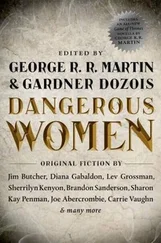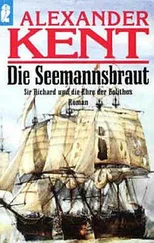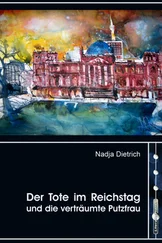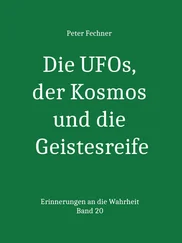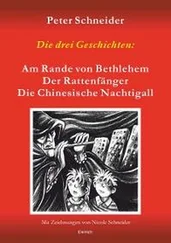Richter, Anna Katharina (2018/2019). „Zur Überlieferung der Historie von ,Flores oc Blantzeflor‘ in Dänemark zwischen Spätmittelalter und Früher Neuzeit“. In: TijdSchrift voor Skandinavistiek 36:1, S. 38–53.
Richter, Anna Katharina/Glauser, Jürg (2018/2019). „Transmission und Transformation. Die Historie von Floire et Blanchefleur in der skandinavischen und niederländischen Überlieferung“. In: TijdSchrift voor Skandinavistiek 36:1, S. 4–7.
Richter, Anna Katharina (2019). „La transmission de Floire et Blanchefleur au Danemark (XVI e–XVII esiècles)“. In: Lodén, Sofia/Obry, Vanessa (Hg.). L’expérience des frontières et les littératures de l’Europe médiévale (= Colloques, congrès et conférences sur le Moyen Âge 26). Paris: Honoré Champion, S. 395–406.
Richter, Anna Katharina (2019a). „Ritter, Romance, Rewriting. Überlegungen zur dänischen Erzählliteratur in der Frühdruckzeit am Beispiel der Historie von Persenober oc Constantianobis (1572)“. In: Besamusca, Bart/de Bruijn, Elisabeth/Willaert, Frank (Hg.). Early Printed Narrative Literature in Western Europe . Berlin und Boston: De Gruyter, S. 325–350.
Rikhardsdottir, Sif (2012). Medieval Translations and Cultural Discourse. The Movement of Texts in England, France and Scandinavia . Cambridge: D. S. Brewer.
Sørensen Nør-Nissom, Jens (1643). Speculum Domesticum Spirituale. Det er: En Aandelig Huss=Speyel / Indeholdendis nogle merckelige Tractater oc Lærdomme […] Tienestvilligen colligerit oc componerit ved Jens Søffrenssøn Nør=Nessom / Boghandler vdi Roeskild. Prentet i Kiøbinghaffn.
Sullivan, Joseph M. (2014). „Arthur of the Northeast: The Old Swedish Herr Ivan Redraws the King Arthur of Chrétien’s Yvain “. In: Bandlien, Bjørn/Eriksen, Stefka G./Rikhardsdottir, Sif (Hg.). „Arthur of the North: Histories, Emotions, and Imaginations“. In: Scandinavian Studies 87:1, S. 33–61.
Syv, Peder (ohne Jahr). „Den danske Boglade“. Handschrift Rostgaard 151, 4to (Det kgl. Bibliotek, Kopenhagen).
Uther, Hans-Jörg (2004). The Types of International Folktales. A Classification and Bibliography. Based on the System of Antti Aarne and Stith Thompson. Part I: Animal Tales, Tales of Magic, Religious Tales, and Realistic Tales, with an Introduction […] (= FF Communications 284). Helsinki: Suomalainen Tiedeakatemia und Academia Scientiarum Fennica.
Akhøj Nielsen, Marita. https://tekstnet.dk/manuscript-descriptions/stockholm-k47-lang-beskrivelse(abgerufen am 2.7.2021).
Abb. 1. K 47, 1r (© Kungliga biblioteket, Stockholm)
Abb. 2. K 47, 112r (© Kungliga biblioteket, Stockholm)
Abb. 3. K 47, 153v (© Kungliga biblioteket, Stockholm)
Abb. 4. K 47, 169v (© Kungliga biblioteket, Stockholm)
Abb. 5. K 47, 196v (© Kungliga biblioteket, Stockholm)
Abb. 6. K 47, 219r (© Kungliga biblioteket, Stockholm)
Abb. 7. K 47, 218v (© Kungliga biblioteket, Stockholm)
Abb. 8. K 47, 255r (© Kungliga biblioteket, Stockholm)
Abb. 9. K 47, 255v (© Kungliga biblioteket, Stockholm)
Abb. 10. Guillaume Caoursin, De obsidione et bello rhodiano (© Det kgl. Bibliotek, Kopenhagen)
Abb. 11. Guillaume Caoursin, De obsidione et bello rhodiano (© Det kgl. Bibliotek, Kopenhagen)
Abb. 12. Persenober og Konstantianobis , 1572 (© Det kgl. Bibliotek, Kopenhagen)
Abb. 13. Flores og Blanseflor , 1504 (?) (© Det kgl. Bibliotek, Kopenhagen)
Abb. 14. Flores og Blanseflor , 1509 (© Det kgl. Bibliotek, Kopenhagen)
Abb. 15. Flores og Blanseflor , 1509 (© Det kgl. Bibliotek, Kopenhagen)
Abb. 16. Flores og Blanseflor , 1591 (© Kungliga biblioteket, Stockholm)
Abb. 17. Flores og Blanseflor , 1591 (© Kungliga biblioteket, Stockholm)
Abb. 18. Flores og Blanseflor , 1591 (© Kungliga biblioteket, Stockholm)
Abb. 19. Flores og Blanseflor , 1591 (© Kungliga biblioteket, Stockholm)
Abb. 20. Flores og Blanseflor , 1605 (© Det kgl. Bibliotek, Kopenhagen)
Abb. 21. Flores og Blanseflor , 1605 (© Det kgl. Bibliotek, Kopenhagen)
Abb. 22. Flores og Blanseflor , 1605 (© Det kgl. Bibliotek, Kopenhagen)
Abb. 23. Flores og Blanseflor , 1695 (© Det kgl. Bibliotek, Kopenhagen)
Abb. 24. Flores og Blanseflor , 1695 (© Det kgl. Bibliotek, Kopenhagen)
Abb. 25. Flores og Blanseflor , 1695 (© Det kgl. Bibliotek, Kopenhagen)
Abb. 26. Flores og Blanseflor , 1745 (© Det kgl. Bibliotek, Kopenhagen)
Abb. 27. Flores og Blanseflor , 1745 (© Det kgl. Bibliotek, Kopenhagen)
Abb. 28. Flores og Blanseflor , 1745 (© Det kgl. Bibliotek, Kopenhagen)
Flores og Blanseflor – Romance in East Scandinavia and the Introduction of Printed Book Culture in Denmark1
Bampi/Richter (Hrsg.), Die dänischen Eufemiaviser, BNPH 68 (2021): 57–87 DOI 10.24053/9783772057502-009
Jonatan Pettersson (Stockholm)  https://orcid.org/0000-0002-5837-8597
https://orcid.org/0000-0002-5837-8597
Abstract:The article addresses the question of what happened to the genre of romance when printing technology was taken into use in late 15 thand early 16 thcentury Denmark, at a time when hand-written manuscripts still were being produced. East Scandinavian romance had a history from the beginning of the 14 thcentury in Sweden, when the three Eufemiavisor Eufemiavisor (schwed.) were created, and they continued to attract interest in late Middle Ages up to the beginning of the 16 thcentury. They appear in Danish manuscripts in the last decades of the 15 thcentury, but when the printing technology is introduced, they seem to play a less prominent role, as only one text, Flores Flores og Blanseflor (dän.) og Blanseflor , survives in the first phase of printing. In the article, it is argued that the choice to print this particular text probably lies in its ability to respond to late medieval currents and the new urban literary market, but also that it perhaps should be understood within the context of a late medieval religious reading of romances.
Keywords:romance, late medieval romance, early prints, Scandinavian literary culture, Old Danish literary history, Eufemiaviser Eufemiaviser (dän.), Flores og Blanseflor Flores og Blanseflor (dän.)
European romance is sometimes primarily associated with its high medieval origins, but it continued to attract interest for a long time, not the least during the late Middle Ages.2 The genre was not stable or petrified; it evolved in different directions as time and contexts changed, and it was assigned new functions and meanings and found new audiences. One much discussed example of change within the romance genre is the abandonment of rhymed verse for prose, but the genre as a whole underwent changes that involved formal characteristics, thematic orientation, ideology, narrative structure, and expected audience.3
The late medieval period is also the period of the introduction of printing technology, which in time would change the whole textual landscape. Printing technology had the potential to make books available to new groups due to the much lower sale prices. One estimation states that printing technology lowered the cost of production by up to 80 percent in comparison with a manually produced book (Ludwig 1964: 4). However, even if the change was to be profound, the current scholarly discussion on this period nevertheless stresses the long co-existence of and exchange between the manuscript culture and printing technology rather than speaks of a sharp break (Boffey 2014; Tether 2017:14–16). Romance also found its way into printed book culture, but not without some hesitation towards the genre among printers, and the relationship would remain complex.4 Here, we will approach this process in Scandinavia.
Читать дальше
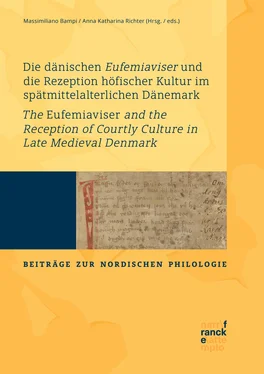
 https://orcid.org/0000-0002-5837-8597
https://orcid.org/0000-0002-5837-8597

